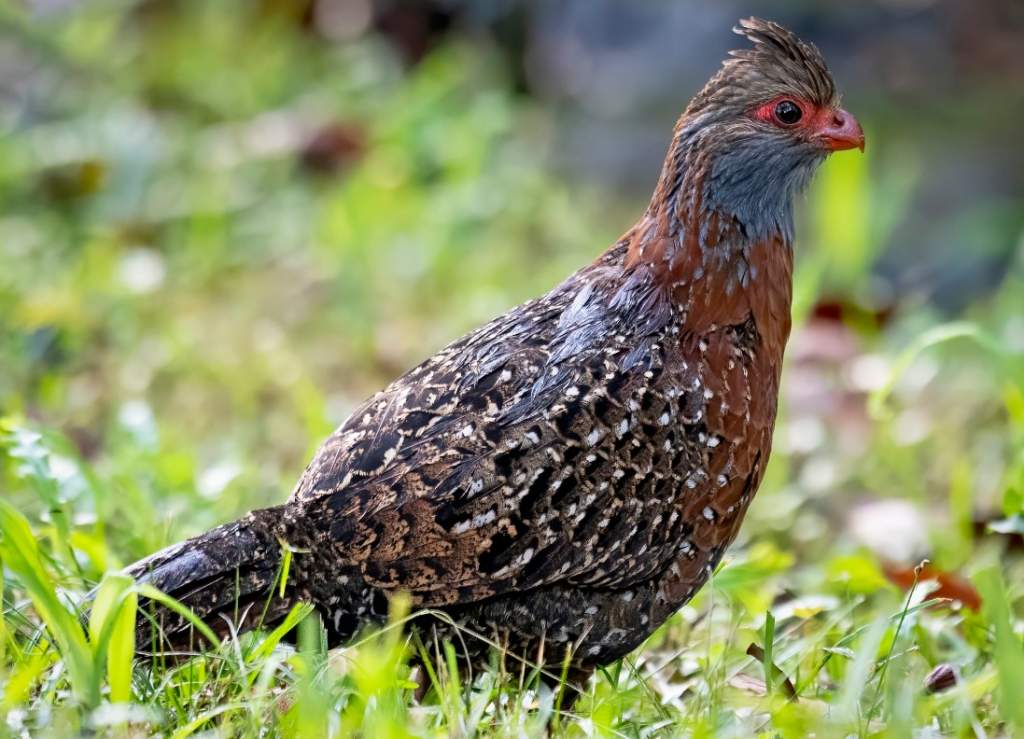The Bearded Wood Partridge: A Jewel Of The Veracruz Mountains
Share
The Bearded Wood Partridge, scientifically known as Dendrortyx barbatus, is a captivating bird that inhabits the lush mountain forests of Veracruz, Mexico. This species, belonging to the family Phasianidae and subfamily Odontophorinae, is a remarkable example of avian beauty and ecological significance. In this article, we will explore the taxonomy, physical characteristics, habitat, diet, behavior, reproduction, and conservation status of this unique bird.

Taxonomy
The Bearded Wood Partridge is classified under the following taxonomic hierarchy:
- Order: Galliformes
- Family: Phasianidae
- Suborder: Galli
- Subfamily: Odontophorinae
- Species: Dendrortyx barbatus
- Type: Dendrortyx barbatus "Lichtenstein" Gould, Monogr. Odontoph., pt. 2, 1846, pi. [2] and text (= pi. 22 of bound volume). (Jalapa, Vera Cruz.)
This classification highlights the bird's close relationship with other partridges and game birds, emphasizing its unique adaptations to forest life.
Physical Characteristics
The Bearded Wood Partridge is a medium-sized bird, characterized by its striking plumage and distinctive features. The most notable aspect is its "beard," a tuft of feathers that gives the bird its name. The overall coloration includes rich browns and blacks, with intricate patterns that provide excellent camouflage in its forest habitat.

Adult males are typically larger than females and exhibit more vibrant colors. Their bodies are robust, with short tails and strong legs adapted for a terrestrial lifestyle. The bearded wood partridge's eyes are large and dark, providing excellent vision in the dim light of the forest understory.
Habitat
The Bearded Wood Partridge is endemic to the mountainous regions of Veracruz, Mexico. It thrives in dense, humid forests, often found at elevations ranging from 1,200 to 2,400 meters. These birds prefer areas with thick underbrush, which provides cover from predators and a rich source of food.
The mountainous terrain, combined with the diverse flora, creates an ideal environment for the Bearded Wood Partridge. The bird's habitat is characterized by a mix of evergreen and deciduous trees, along with a variety of shrubs and ground cover that support its foraging behavior.
Diet
The diet of the Bearded Wood Partridge primarily consists of seeds, fruits, and leaves. These birds are ground feeders, foraging in the leaf litter for fallen seeds and berries. Their strong beaks are well-adapted for cracking open seeds, allowing them to access a variety of food sources.

In addition to seeds and fruits, they may also consume small invertebrates, which provide essential protein, especially during the breeding season when nutritional demands are higher.
Behavior
The Bearded Wood Partridge is known for its secretive and elusive nature. These birds are primarily terrestrial, spending most of their time on the forest floor. They are not strong fliers, preferring to run and hide among the underbrush when threatened.
Their vocalizations are a series of soft calls and whistles, which are often heard during the early morning and late afternoon. These calls play a crucial role in communication, especially during the breeding season when males establish territories and attract females.

Reproduction
Breeding typically occurs during the rainy season, which provides ample food resources for raising chicks. The female lays a clutch of 4 to 8 eggs in a shallow nest on the ground, often hidden among dense vegetation. Both parents are involved in incubating the eggs and caring for the young once they hatch.
Chicks are precocial, meaning they are relatively mature and mobile shortly after hatching. They quickly learn to forage for food, guided by their parents, who remain protective during this vulnerable stage.
Conservation Status
The Bearded Wood Partridge is currently classified as Near Threatened due to habitat loss and degradation caused by deforestation and agricultural expansion. Conservation efforts are essential to protect this species and its habitat, ensuring that future generations can appreciate its beauty and ecological role.
Birdwatchers and nature enthusiasts can contribute to conservation efforts by supporting local organizations focused on habitat preservation and participating in bird monitoring programs.
Final Thoughts
The Bearded Wood Partridge is a remarkable species that embodies the rich biodiversity of the Veracruz mountains. Its unique adaptations and behaviors make it a fascinating subject for study and observation. By understanding and protecting this bird, we can help preserve the delicate balance of its forest ecosystem, ensuring that the enchanting calls of the Bearded Wood Partridge continue to echo through the mountains for years to come.
